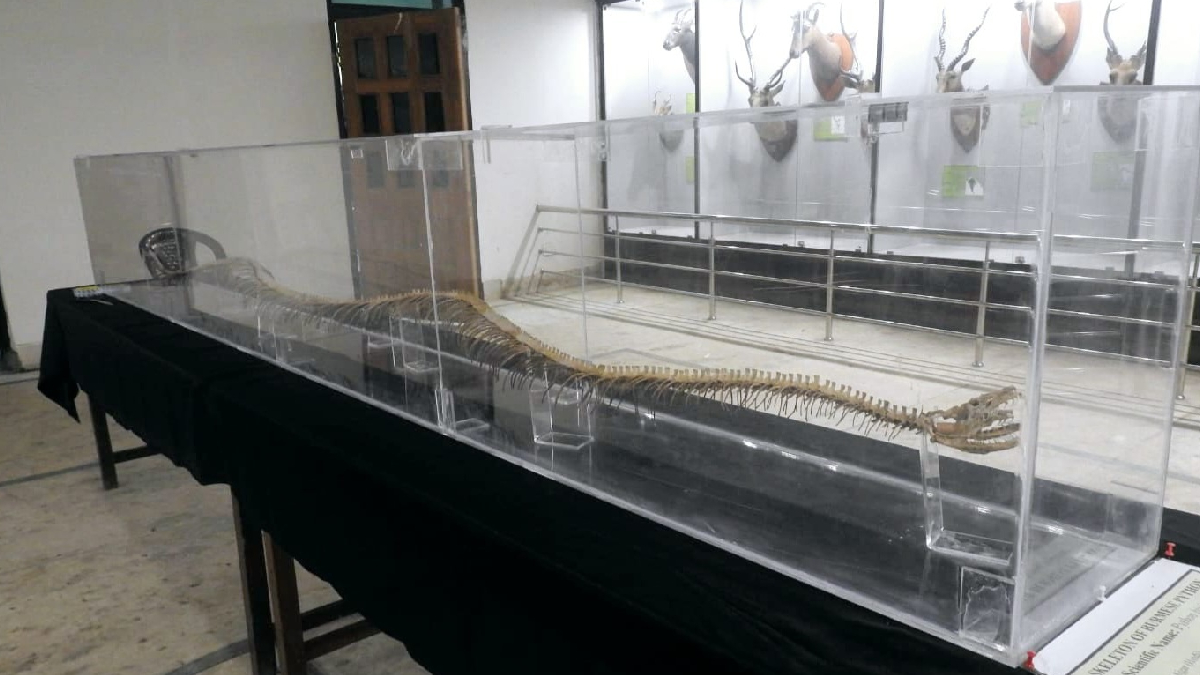India has taken a major step in wildlife conservation with the establishment of the country’s first zoo-based biobank at the Padmaja Naidu Himalayan Zoological Park (PNHZP) in Darjeeling, West Bengal. The facility, which became operational in July 2024, is designed to store and preserve genetic materials from endangered species. Alongside the biobank, the zoo has also launched an animal museum, further strengthening its conservation and research capabilities. The project is a collaboration with the Centre for Cellular and Molecular Biology (CCMB) under the Ministry of Science and Technology, making it a crucial milestone in India’s wildlife preservation efforts.
Why is the Biobank at Darjeeling Zoo Important?
The biobank at PNHZP serves as a ‘frozen zoo,’ where DNA, cellular, and tissue samples from endangered animals are collected and stored under cryogenic conditions at -196°C using liquid nitrogen. This process ensures that genetic materials remain viable for future scientific research, breeding programs, and potential species revival efforts.
As of February 2025, the biobank has collected genetic materials from 60 animals across 23 species, with a focus on those at the highest risk of extinction. The goal is to create a long-term genetic repository that can aid conservationists in preventing species loss. This initiative is part of a broader national strategy, with similar biobanks planned for the National Zoological Park in Delhi and Nandankanan Zoological Park in Odisha.
This facility plays a vital role in genetic research, enabling scientists to study wildlife diseases, population genetics, and breeding techniques. By preserving these samples, the biobank provides a safeguard against the permanent loss of species due to environmental threats and climate change.
What Does the New Animal Museum Offer?
In addition to the biobank, PNHZP has inaugurated a state-of-the-art pathology laboratory and a skeleton museum. These facilities enhance both conservation and educational efforts.
- Pathology Laboratory: This lab allows the zoo to conduct advanced medical examinations on its animal residents, improving their overall health management. Early detection of diseases and genetic disorders can significantly enhance wildlife conservation strategies.
- Skeleton Museum: The newly opened museum preserves the skeletal remains of endangered species, offering valuable insights into their anatomy and evolutionary history. It also serves as an educational tool for visitors, researchers, and students who want to learn more about India’s rich biodiversity.
The animal museum was officially inaugurated on December 23, 2024, by West Bengal’s Forest Minister, Birbaha Hansda.
How Has Darjeeling Zoo Contributed to Conservation?
PNHZP, established on August 14, 1958, has long been a leader in the conservation of high-altitude Himalayan species. Over the years, it has successfully implemented captive breeding programs for several endangered animals, including the red panda, snow leopard, and Himalayan wolf.
One of its most notable achievements was the release of nine captive-bred red pandas into the wild at Singalila National Park between 2022 and 2024. This effort has already shown promising results, with five red panda cubs born in their natural habitat. The zoo’s conservation initiatives have gained international recognition, with its red panda program being shortlisted for the 2024 World Association of Zoos and Aquariums (WAZA) Conservation and Environmental Sustainability Awards.
What Are the Future Implications?
The establishment of the biobank and animal museum at PNHZP marks a crucial step in India’s wildlife conservation strategy. By preserving genetic materials, this initiative not only protects biodiversity but also provides critical resources for future scientific breakthroughs.
Looking ahead, this biobank could play a key role in reviving species that are on the brink of extinction. As environmental changes and habitat destruction continue to threaten wildlife, having a genetic repository ensures that species conservation efforts can adapt and evolve with time.
With similar facilities planned in other parts of India, the Darjeeling zoo’s initiative sets a precedent for future conservation programs. It reflects a forward-thinking approach that blends traditional conservation methods with modern scientific advancements, ensuring the survival of endangered species for generations to come.
Key Highlights of India’s First Wildlife Biobank at Darjeeling Zoo
| Aspect | Details |
|---|---|
| Why in News? | Darjeeling’s Padmaja Naidu Himalayan Zoological Park (PNHZP) has set up India’s first zoo-based biobank and animal museum. |
| Operational Since | July 2024 |
| Collaboration With | Centre for Cellular and Molecular Biology (CCMB), Ministry of Science & Technology |
| Biobank Purpose | Collects and preserves DNA, tissues, and reproductive cells from endangered species for future research and conservation. |
| Storage Method | Cryogenic preservation at -196°C using liquid nitrogen. |
| Current Collection | 60 animals from 23 endangered species (as of February 2025). |
| Additional Facilities | Pathology laboratory for animal health & Skeleton museum for education and research. |
| Inauguration Date | December 23, 2024, by West Bengal’s Forest Minister Birbaha Hansda. |
| Future Plans | Similar biobanks to be established at Delhi Zoo and Nandankanan Zoo (Odisha). |
| Conservation Impact | Supports species revival efforts and enhances research on endangered wildlife. |



 Overall LFPR Show Upward Momentum as Une...
Overall LFPR Show Upward Momentum as Une...
 Pariksha Pe Charcha 2026: Link, Registra...
Pariksha Pe Charcha 2026: Link, Registra...
 Non-Government NPS Subscribers Can Now W...
Non-Government NPS Subscribers Can Now W...







